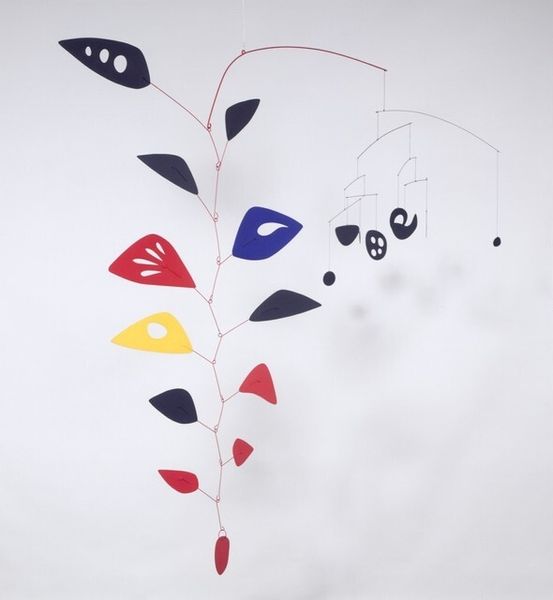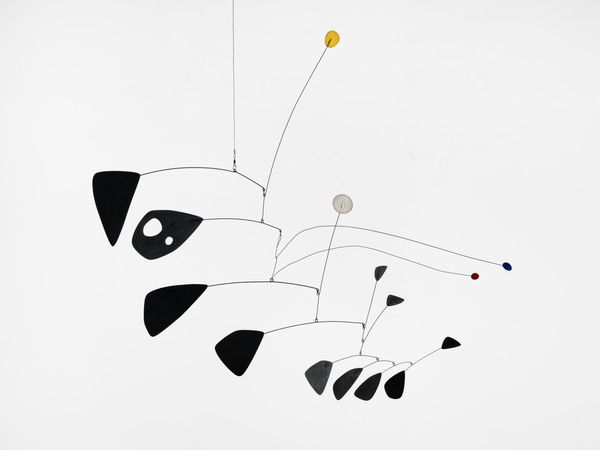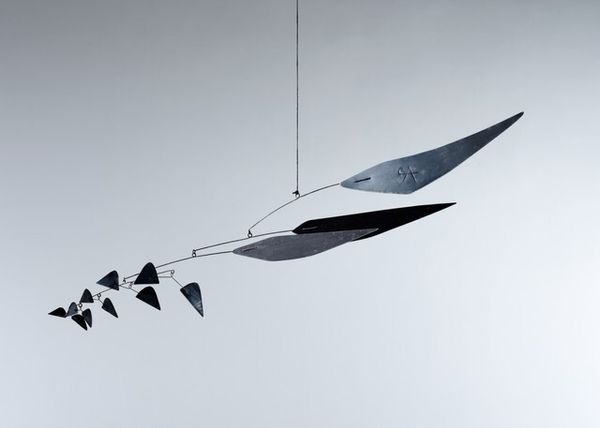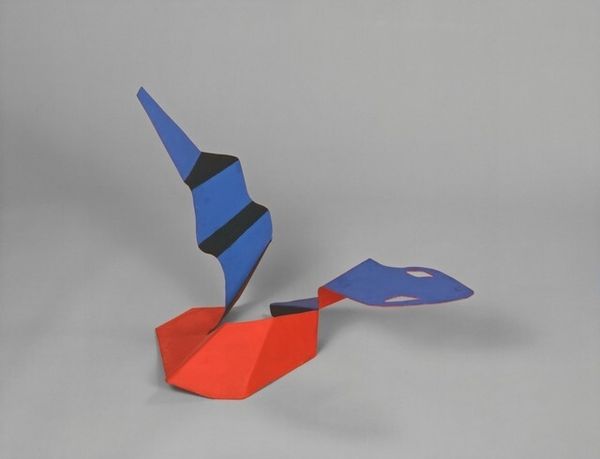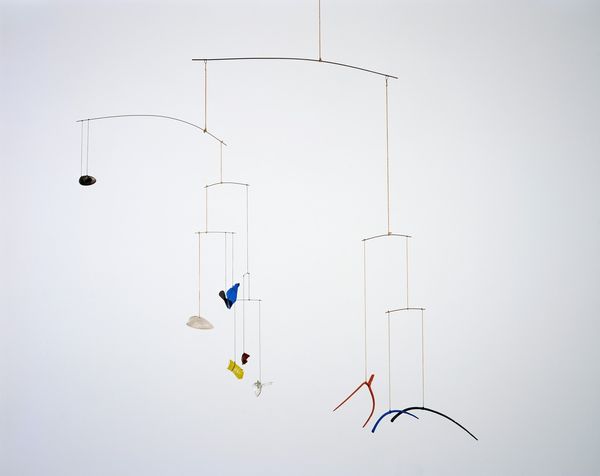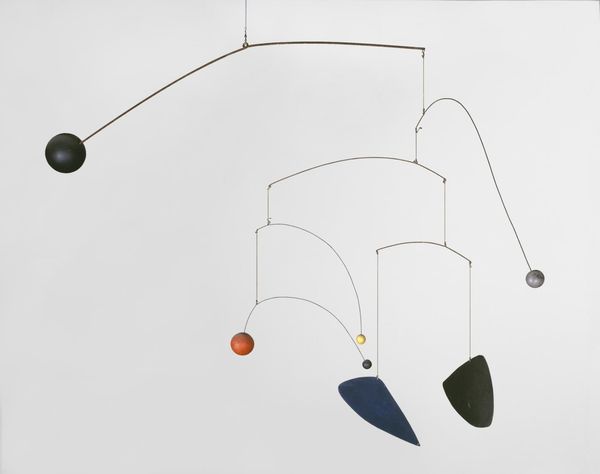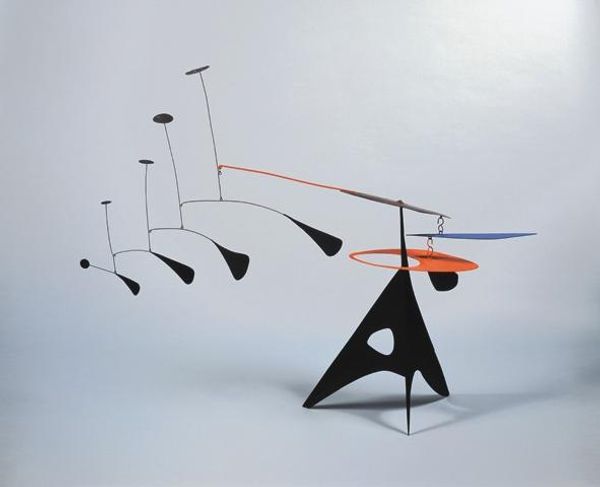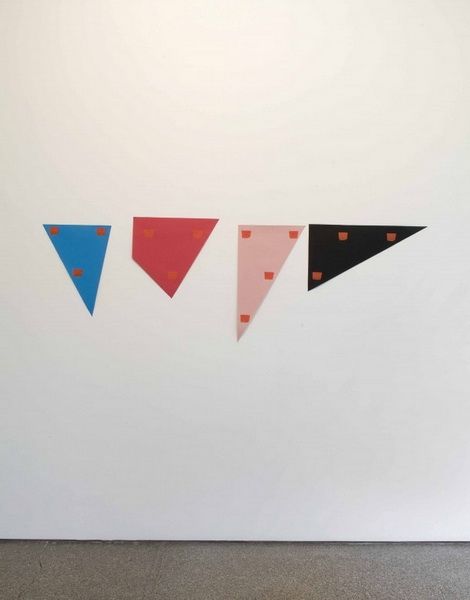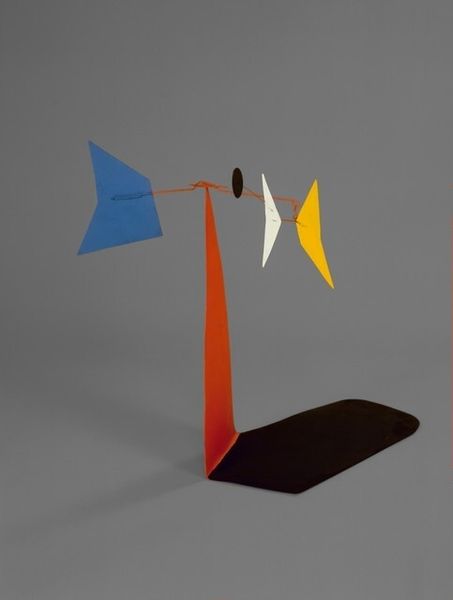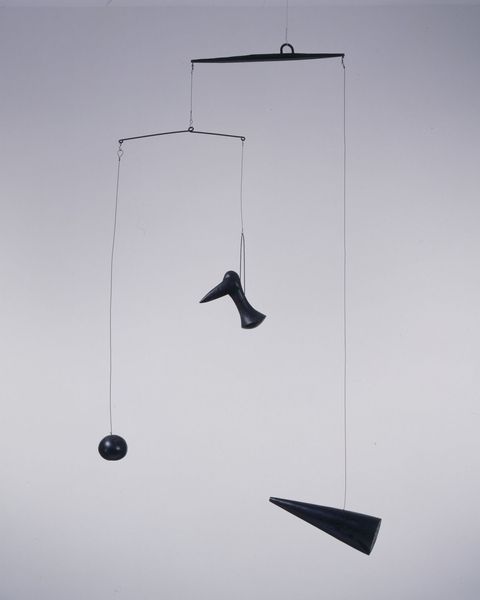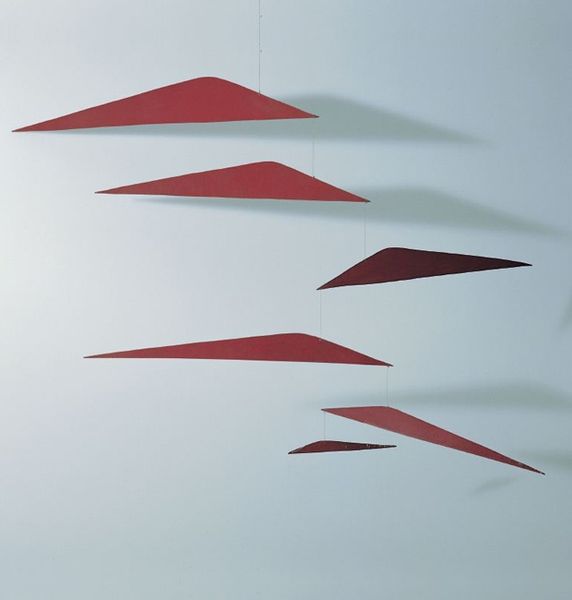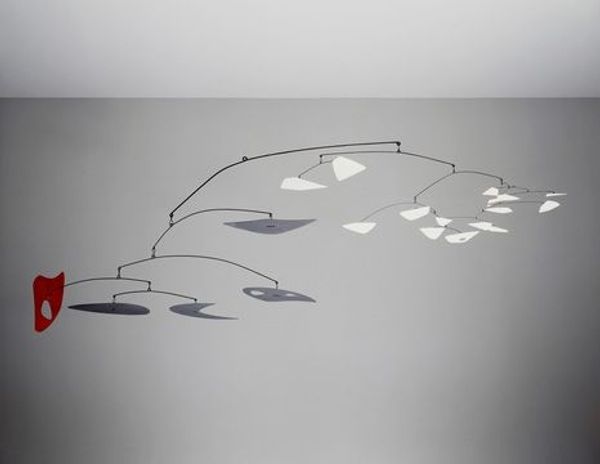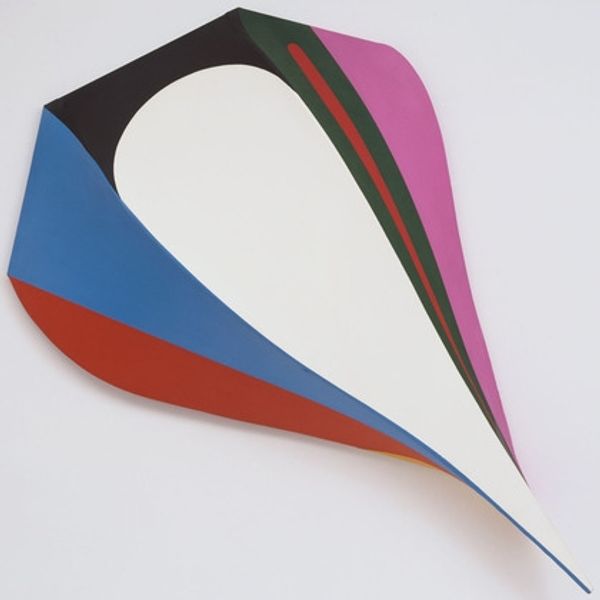
Dimensions: overall: 28.9 x 69.2 cm (11 3/8 x 27 1/4 in.)
Copyright: National Gallery of Art: CC0 1.0
Editor: So this is Alexander Calder's "Model for East Building Mobile," created in 1972, a sculpture made from metal. It strikes me as playful and almost optimistic, even with the contrasting black and red shapes. What do you see in this piece from your perspective? Curator: Well, thinking historically, it’s impossible to separate this work from the broader context of modernism and the role art was meant to play in public spaces. Calder, of course, revolutionized sculpture with his mobiles. He wanted art to be democratic, accessible, not some static object on a pedestal. Editor: Democratic in what sense? Curator: In the sense that movement itself – and the interaction with the surrounding air and light – became part of the artwork. The ever-changing configurations invite active engagement from the viewer. It moves away from static art intended only for the elite. Its later display in a public space—specifically, the East Building of the National Gallery of Art in DC—is itself part of the narrative, part of the intention of democratizing art. Does that make sense? Editor: Definitely. I see the movement and change you describe as a core element. The simplicity of the shapes almost welcomes interpretation from different people and promotes movement of museum visitors to participate. It’s not imposing. Curator: Precisely! It avoids being dictatorial and elitist through abstraction. Also, we need to think about the institutional frameworks – the museums, the patrons – that supported this kind of large-scale, public art in the postwar era. Calder’s mobiles weren’t just aesthetic objects; they were symbols of a certain kind of progressive, optimistic vision. Editor: It’s fascinating to see how the historical context shapes even seemingly abstract works. It makes you rethink the purpose of its creation and intent behind displaying this mobile. Curator: Absolutely. Art never exists in a vacuum. Understanding the historical and institutional forces at play allows us to engage with art on a much deeper level.
Comments
No comments
Be the first to comment and join the conversation on the ultimate creative platform.
